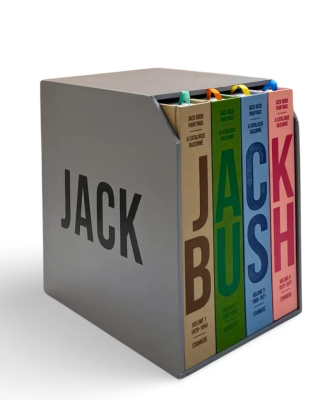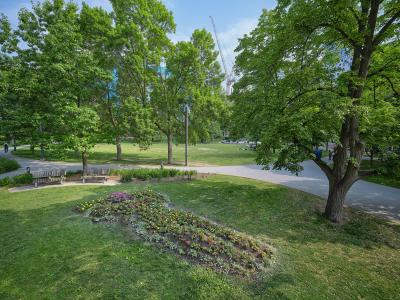Essential Reading: Mashel Teitelbaum
AGO Curator Jim Shedden writes about the legacy of Mashel Teitelbaum in the new book Terror & Beauty

Mashel Teitelbaum, Terror and Beauty, Edited by Andrew Kear, WORK BOOK and Goose Lane Editions, 2024. Cover image, Mashel Teitelbaum, Dark Self (detail), 1958, Oil, enamel canvas, 101.6 x 76.2 cm, Collection of Matthew Teitelbaum, Boston, © The Estate of Mashel Teitelbaum.
A painter, poet, critic, screenwriter, and novelist, Mashel Teitelbaum (1921–1985) created works of art that were always arresting, even as they ranged from landscapes to portraits, from figurative to abstract, from modernism to expressionism. Like his life, his art was characterized by an honesty of self-expression, a creative integrity, and a desire to speak truth to power, often placing him in conflict with the establishment.
Edited by Andrew Kear and published fall 2024 by WORK BOOK and Goose Lane Editions, Mashel Teitelbaum: Terror and Beauty reveals the full scope of Teitelbaum’s career, through more than 200 images as well as essays and reflections on his life and work from artists, curators, and friends.
The following excerpt is taken from the catalogue afterword, written by Jim Shedden, Curator, Special Projects & Director, Publishing at the AGO.
For me, Mashel was one of these figures that might possibly tell us something about Toronto. While it seems that people like Mashel might have become outsiders anywhere, it seems likely especially so in relatively conservative Toronto. There are institutions in one place, on one side, and then artists on the outside, looking in. I’m interested in people who make things happen despite the forces against them, especially when faced with the unlikelihood of success. I’m interested in how this plays out in visual art and also in music, cinema, publishing, hangouts and any number of things that make Toronto a more interesting place...
The biographical details of solitary, Romantic figures like the filmmaker Stan Brakhage, Mashel, or Thoreau, Whitman or even Emily Dickinson, reveal structures of deep dependence that made their creative work possible. Right forms of dependence are the road to freedom, but they require a lot of acceptance of people and constraints, not having to control every piece of the puzzle. I guess Mashel’s inability to do that made his journey deeply challenging and at times absolutely impossible, because you’re beginning something that’s going to completely entwined with others. And you can’t make it work. Conflict between individual and context.
To me, one of the things that’s extraordinary about Mashel is that, despite not having a support structure, he was incredibly prolific. More prolific than many. And the variety of work is just really extraordinary. He seemed to have this insistence on never repeating himself. Starting again completed hm. It was recorded that he once said, “Artists who do the same thing over and over, that’s death, that’s anti-art, anti-spirit. That’s embroidering around the edges of a talent.” But later in his life he questioned artists who always attempted to do something different. He suggests both positions might be equally suspicious. I believe that journey through existential conflict is the spark of creativity. And for Mashel, such understanding the beginning of a sustainable reputation.
Mashel Teitelbaum: Terror & Beauty is available now. The publication was written and produced with the approval of the Estate of Mashel Teitelbaum and co-published by Goose Lane Editions and Work Book. For more details, visit gooselane.com/products/mashel-teitelbaum.

























